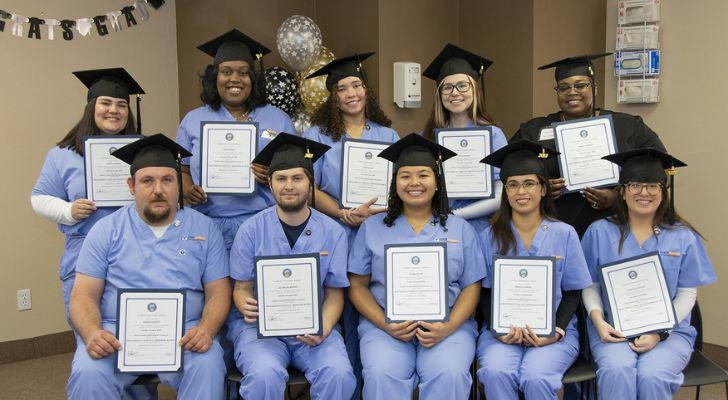From Student to Certified Nursing Assistant (CNA): What Happens After You Get Certified
Becoming a Certified Nursing Assistant (CNA) is a major accomplishment—but what happens next is equally important. After passing your exams and receiving your certification, a new journey begins. Whether your goal is immediate employment, further education, or building a long-term career in healthcare, knowing what to expect can help you plan your next move with confidence.

Getting Licensed: The Final Step Before Working
Certification alone isn’t always enough—you may also need to complete licensing steps depending on your state or province. In most U.S. states, for example, you must:
- Pass a state-recognized written and practical CNA exam
- Submit to a background check and health clearance
- Register with your state’s nursing aide registry
Once these steps are complete, you’ll be legally eligible to work as a CNA in hospitals, long-term care facilities, or home health settings.
Tip: Check with your state board or local healthcare authority to confirm requirements, especially if you plan to move across state lines.
Applying for Your First CNA Job
With certification in hand, it’s time to start applying for jobs. The good news? Demand is high. According to the U.S. Bureau of Labor Statistics, over 190,000 CNA jobs open up annually due to retirements and expanding care facilities.
Where to Look:
- Skilled nursing facilities (SNFs)
- Hospitals and clinics
- Assisted living and memory care communities
- Home healthcare agencies
- Hospice organizations
How to Stand Out:
- Highlight your practical experience during training
- Obtain references from instructors or placement supervisors
- Be open to night shifts or weekends for faster placement
- Create a resume tailored to care-related responsibilities
Even without prior job experience, many CNAs are hired based on strong work ethic and compassionate attitudes.
What Your First Job Will Be Like
Most CNAs begin in entry-level positions that provide essential care for elderly, disabled, or recovering patients.
Your day-to-day duties might include:
- Assisting with bathing, grooming, and feeding
- Monitoring vital signs
- Helping with mobility and transfers
- Documenting patient observations
- Offering emotional support to residents and families
Expect your first few weeks to be physically and emotionally intense. You’ll likely work under the supervision of an RN or LPN, and you’ll quickly develop both technical skills and resilience.
Career Progression: Where Can CNA Lead?
Being a CNA doesn’t mean staying in one position forever. In fact, it opens several advancement paths, including:
1. Specialized Certifications
Many CNAs pursue additional training in areas like:
- Dementia or Alzheimer’s care
- Palliative and hospice care
- Phlebotomy or EKG monitoring
These credentials improve employability and raise wages.
2. Become an LPN or RN
A common progression is to attend a Licensed Practical Nurse (LPN) program or an Associate Degree in Nursing (ADN) to become a Registered Nurse (RN). Many employers offer tuition reimbursement or bridge programs.
3. Supervisory Roles
With experience, you may be promoted to a CNA team lead or shift supervisor—particularly in large facilities.
Wages, Benefits, and Work Schedules
Pay rates vary depending on geography and facility type. As of 2025:
- The average CNA earns between $18–$25 per hour in the U.S., with overtime and weekend differentials.
- In Canada, PSWs (similar to CNAs) earn CAD $20–$28/hour.
- Australian aged care workers make AUD $26–$34/hour, depending on location.
Full-time roles often include benefits like:
- Paid sick leave and vacation
- Health insurance
- Retirement plans
- Access to continuing education
Flexible scheduling is another benefit. CNAs often work:
- 8-hour or 12-hour shifts
- Day, night, or split schedules
- Weekends and holidays (with higher pay rates)
Real-Life Example: Emily’s First Year as a CNA
Emily, 23, completed her CNA program in California in 2024. Within two weeks of certification, she was hired by a skilled nursing facility offering rotating shifts and paid training.
Over her first year:
- She supported over 30 residents on her floor
- Became certified in dementia care
- Was promoted to team lead for the evening shift
- Applied for a local LPN bridge program, using employer-funded tuition assistance
“I didn’t know this path could move so quickly,” Emily says. “Every day is challenging, but knowing I’m helping someone feel safe and cared for makes it worth it.”

Common Challenges and How to Overcome Them
The CNA role is incredibly rewarding—but not without difficulties.
Physical Fatigue
- Use proper lifting techniques
- Ask for help with transfers when needed
- Wear quality shoes and hydrate throughout your shift
Emotional Stress
- Talk to co-workers or supervisors
- Take breaks when possible
- Remember your impact: You are making lives better every day
Career Uncertainty
- Set small goals (e.g., become a mentor, enroll in a new course)
- Stay connected to a professional network
- Seek facilities that support long-term career growth
